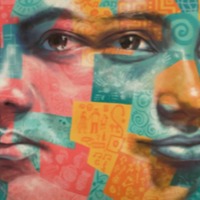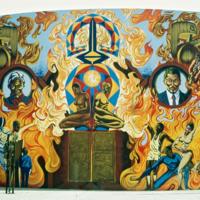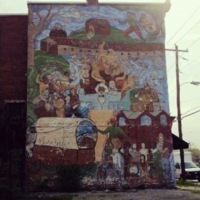
Jamie
There are an estimated 134,000 people living in modern slavery in Rwanda (GSI 2018). The country is a source for men, women and children subjected to forced labour and sex trafficking. Young girls working as domestics often have their employment terminated after becoming pregnant and subsequently become exploited in to prostitution. Moreover, Rwandan men, women and children are often trafficked to other destinations around the world including East Africa, the Middle East and China for forced labour and forced marriage. Refugees fleeing conflict and political violence in neighbouring countries remain highly vulnerable to trafficking in Rwanda. Jamie was subjected to sexual exploitation as a child after a breakdown in her parent’s marriage led to her being kept by an older man for two weeks. After being raped repeatedly by two men, she was locked in a house which caught fire. Jamie woke up in hospital disorientated and terrified.

The Fire Next Time I
Dewey Crumpler is an influential black muralist whose work is largely situated in San Francisco. In 1977, after finishing a series of murals at the George Washington High School in San Francisco, the muralist embarked upon two major projects titled The Fire Next Time I and The Fire Next Time II. For the first mural, Crumpler focused on the relationship between African and African American culture. Located at the Joseph Lee Recreation Center in Hunter’s Point-Bayview, the Fire Next Time I deals with education, culture and religion for African Americans. It moves back and forth between the figures of a teacher and a student, Harriet Tubman, Paul Robeson, and two mythical beings in African folk-lore – the Senufo birds.When Crumpler was painting the mural on Oakdale Avenue and Mendell Street in 1977, a local resident approached him and asked about the figures. Upon hearing about Tubman and Robseon, the resident responded: “They don’t live here, man. You should put up a couple of locals like Richard and Edwina. They’re a stone couple.” But a few weeks later, the resident returned and told Crumpler he was right: “black people needed to know more about important leaders so they could have somebody to respect, and besides, Richard and Edwina had broken up.” The mural also faced backlash from a local church group, because of the nude figures at the midpoint.
![John Weber, All Power to the People, Cabrini-Green Public Housing Development, 357 W. Locust St, Chicago, 1969 [destroyed].jpg John Weber, All Power to the People, Cabrini-Green Public Housing Development, 357 W. Locust St, Chicago, 1969 [destroyed].jpg](https://486312.frmmmguz.asia/files/square_thumbnails/5bee9c55de2e128c0239ac4a0793b9c0.jpg)
All Power to the People
In 1969, in the courtyard of Saint Dominic’s Church in Cabrini-Green, John Pitman Weber painted All Power to the People with a team of black teenagers. The 37-foot-long mural put the antislavery leader Frederick Douglass alongside Malcolm X, Huey P. Newton and Erika Huggins on the right-hand-side. On the left are skeletons of police officers and a statement by the leader of the Chicago Black Panther Party, Fred Hampton: "Dare to Struggle, Dare to Win." A raised Black Power fist, enveloped by flames, holds broken chains in a symbol of self-emancipation. A few months after the creation of this mural, Fred Hampton was shot and killed by the FBI under J. Edgar Hoover’s COINTELPRO. Weber was a white Harvard graduate and Fulbright scholar. The mural was one of the first collaborations between untrained community residents and a trained artist, a method that became common practise for American community murals.

Neighborhood Center Mural Project
In July 1979, the city of Harrisburg saw a slice of its history on a wall at 610 Maclay Street. Painted under the direction of Toni Truesdale, the main theme of the mural was the history of the Underground Railroad in Harrisburg, along with a famous visit from Frederick Douglass and William Lloyd Garrison. In 1847, after both Garrison and Douglass returned from speaking tours in England, the two abolitionists decided to travel to Ohio to speak. Meeting in Philadelphia and speaking at other Pennsylvanian cities along the way, Douglass and Garrison reached Harrisburg on August 7, 1847. Garrison felt the city was “very much under the influence of Slavery. I do not anticipate a quiet meeting.” Garrison successfully finished his speech at the Dauphin County Court House to a full audience. But as Douglass reached the stage, audience members threw eggs. Douglass proceeded with his speech until he was interrupted by firecrackers. Someone also threw a stone at him. He observed that “the atrocious character of the proceedings is sufficiently palpable, and Harrisburg one day will be ashamed of it.”